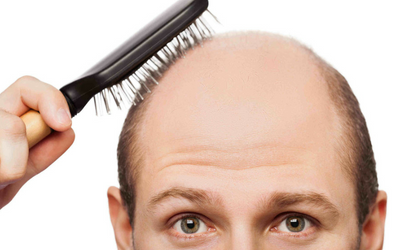

-
by admin
What is a hair transplant?
A hair transplant is a surgical technique that is done under local anesthesia. It is a minor outpatient surgery in which follicular units or grafts are extracted from the back and sides of the scalp and placed in the recipient area i.e. front, mid, or crown portion of the scalp wherever there
is thinning or bald patches.
There are two basic methods of hair transplantation:
- FUE: Follicular unit extraction, and
- FUT: Follicular Unit Transplant or strip method
Reasons for hair loss in males/females:
- Heredity: Family history of hair loss. The most common reason for hair loss is a hereditary condition that happens with aging. This condition is called Androgenetic alopecia which can cause Male pattern baldness and female-pattern baldness.
- Hormonal changes: during pregnancy, childbirth, menopause, abnormal thyroid levels, PCOD
- Poor nutrition: Vitamin and mineral deficiency, malnutrition, low protein diet/severely calorie-restricted diet
- Stress: If stress is moderate to severe, physical trauma, emotional shock
- Illnesses: Acute illness or severe bacterial or viral infections, autoimmune diseases, etc.
- Several types of medicines: eg anticoagulants, thyroid medicines, beta-blockers, anticonvulsants
- Fungal infection of the scalp.
- Radiation therapy to the head.
- Excessive hair styling using chemicals
- Too much pressure and tension due to tight hair styles like braids, and ponytails cause breakages of hair from the frontal scalp.
- Supplements: Most of the products hyped around the market like whey protein powders, etc might lead to hair loss.
Types of hair loss:
Telogen effluvium: In this condition, a large number of hair enters in resting phase causing hair shedding. The cause of TE may include irregular food, scanty or disturbed sleep pattern, moderate to severe stress, autoimmune diseases, after childbirth, viral infections major illnesses

Androgenetic Alopecia: It’s a genetic condition that can affect both women and men.
- In male pattern hair loss, receding hairline, and loss of hair from the frontal and crown area above the temples is seen.
- In female pattern hair loss thinning all over the scalp is usually observed.Alopecia areata-: It can start spontaneously and causes patchy hair loss in adults and children as well.
- Alopecia Universalis: In this condition, there is total hair loss on body parts including the scalp, eyebrows, eyelashes, pubic areas, and armpits.
- Diffuse Alopecia: In this type, hair density decreases all over the scalp resulting in subsequent thinning of hair.
- Trichotilomania: It can be considered a psychological disorder in which a person pulls out their own hair, which gives a clinical picture of short broken scalp hair in patches.
- Scarring alopecia: Inflammation followed by burns, (post trauma)skin injury, and skin disorders such as Lichen planus, Lupus, etc. result in scars that destroy the ability to regenerate new hair.
- Involutional Alopecia: It is a natural condition in which hair gradually thins with age. A number of follicles go into the resting phase and the remaining hair becomes shorter and fewer in number.
What is a Graft:
A graft or a follicular unit is a group of hair follicles that can have a number of hair ranging from 1 to a maximum of 3-5 hair follicles. It also consists of the sebaceous gland, nerves, and arrector pili muscle.
FUT: Follicular Unit transplantation is one of the hair transplant procedures also known as the strip method. In the FUT technique permanent hair-bearing skin from the back of the scalp is harvested by cutting out a single strip followed by microscopic dissection of individual grafts or follicular units is carried out.
FUE: In the FUE technique after infiltrating local anesthesia in the donor area hair grafts are excised randomly using micro punches. Thus individual grafts is being excised easily.
After extraction of the grafts proper hairline and concerning areas marking is done after measuring the distance considering the age of the patient, face structure, and patient requirement. Then the front of the scalp is infiltrated with local anesthesia and slits are made in bald patches and in thin areas maintaining the same angles as the surrounding existing hair followed by placing the grafts in these pre-made slits.In the front line grafts are placed in such a way that it gives a very natural look of grown hair later on, Lastly, dressing is done to cover the donor area which can be removed just after two days.
It is a quite comfortable procedure. Patients can listen to music, play on mobile, or can talk to friends during surgery.
In the recent past FUE has gained more popularity as it does not require incision and stitches, it’s a scarless procedure. It is an outpatient procedure and the patient can follow a regular routine on the next day of the surgery but it is recommended to not do any strenuous exercises or work immediately after the procedure; but gradually it can be started after a few days.
When Hair Transplant is recommended?
There is no age limit to undergo hair transplant surgery as such. For any adult who has lost a number of hair on the scalp and to fill up the bald areas hair transplant can be done. One can begin with small, bothersome bald areas, and in the future if further bald patches develop or in thin areas, another session can be planned.
Safety of hair transplant:
A hair transplant is a safe minor procedure when it is done by a qualified dermatologist or a hair transplant doctor/surgeon. Before taking for a hair transplant blood check-up, X-ray, and ECG tests are done and ideally physical fitness certificates should be obtained from a qualified MD medicine physician so as to know that the patient is a fit candidate to undergo hair transplant surgery. As it is done under local anesthesia sensitivity of anesthesia is done prior to the procedure. If this pre-procedure workup is done it is absolutely a safe procedure.
